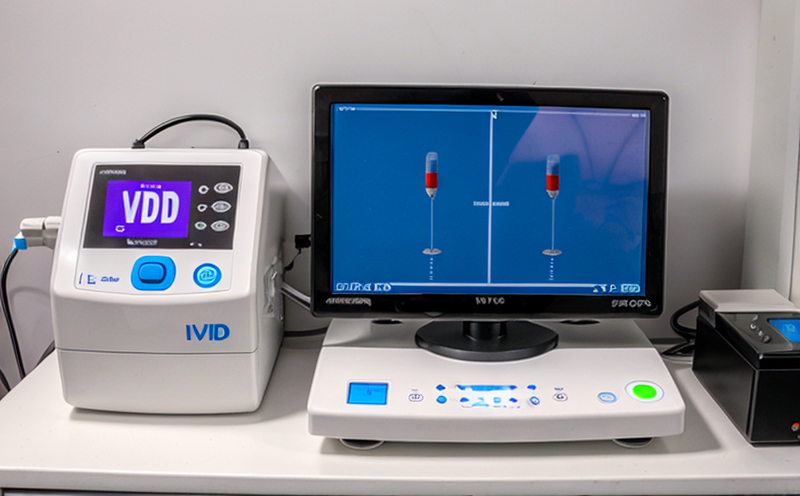Benefits
Comprehensive packaging integrity testing offers several advantages that contribute significantly to the overall quality assurance of IVD reagents: Ensuring Compliance: By adhering strictly to international standards like ISO 11607-3, laboratories demonstrate their commitment to regulatory compliance. This builds confidence among regulators and stakeholders regarding product safety and efficacy. Enhanced Product Reliability: Through rigorous testing, potential issues related to packaging integrity are identified early in the development process. This allows manufacturers to address these concerns before they impact end-users, thereby enhancing overall product reliability. Reduced Risk of Contamination: Properly designed and tested packages significantly reduce the risk of contaminants entering the reagents. This is particularly critical given that even minute amounts of foreign substances can degrade reagent performance over time. Improved Quality Assurance: Consistent adherence to established testing protocols ensures uniformity in quality across all batches produced by different manufacturers or facilities worldwide. This consistency fosters trust within both industry and healthcare communities. Cost Savings: Early detection of packaging defects through thorough integrity tests helps avoid costly post-market recalls and repairs, ultimately leading to reduced operational costs for manufacturers.Industry Applications
| Application Area | Description | Testing Methodologies Used | Relevant Standards |
|---|---|---|---|
| Precision Medicine | Involves personalized treatment plans based on individual genetic makeup. Packaging integrity ensures that sensitive reagents used in these therapies are protected from degradation. | Pressure testing, WVTR measurement, oxygen permeability assessment | ISO 11607-3:2019 |
| Point-of-Care Testing (POCT) | Conducted at the point of patient care, often in resource-limited settings. Robust packaging integrity is essential to maintain reagent stability. | Water vapor transmission rate measurement, pressure testing | ASTM E96-18 |
| Blood Glucose Monitoring Systems | Used by diabetic patients to monitor blood sugar levels. Proper packaging prevents reagent deterioration which could lead to inaccurate readings. | Oxygen permeability testing, pressure testing | IEC 60601-2-29:2008 |
| Clinical Chemistry Analyzers | Automated machines used in laboratories to perform multiple tests simultaneously. Packaging integrity testing ensures accurate reagent supply. | Water vapor transmission rate measurement, pressure testing | EN 60601-2-29:2008 |
Eurolab Advantages
At Eurolab, we pride ourselves on providing top-tier packaging integrity testing services tailored specifically for In Vitro Diagnostic (IVD) reagents. Our state-of-the-art facilities and experienced team ensure accurate, reliable results that meet the highest industry standards. Precision in Methodology: We utilize advanced analytical techniques such as SEM to examine even the finest details of multi-layer packages. This precision guarantees that no potential weak spots go unnoticed. Extensive Experience: With years of experience in medical device testing, our team understands the unique challenges faced by IVD manufacturers. Our expertise translates into more effective and efficient testing processes. Compliance with International Standards: All our tests are conducted according to internationally recognized guidelines like ISO 11607-3 and ASTM E96-18. This ensures that the results align perfectly with global regulatory requirements, facilitating smoother international trade. Client-Centric Approach: We work closely with clients from concept through completion, offering personalized solutions that address their specific needs. Whether you're a small startup or a large corporation, our flexible approach allows us to cater to your unique requirements.Frequently Asked Questions
What is the significance of packaging integrity testing for IVD reagents?
Packaging integrity testing ensures that the protective barriers around IVD reagents remain intact during storage and transport, preventing contamination from external factors like moisture, light, or temperature fluctuations. This helps maintain product stability and accuracy in diagnostic outcomes.
Which international standards apply to packaging integrity testing?
ISO 11607-3:2019 provides specific requirements for the testing methods used in evaluating package integrity. It covers various aspects including pressure testing, water vapor transmission rates, and oxygen permeability assessments.
How does packaging integrity affect the performance of IVD reagents?
Compromised packaging can lead to degradation of reagent components due to exposure to environmental elements such as moisture or oxygen. This could result in unreliable test results, compromising patient safety and clinical decision-making processes.
What materials are typically tested for their integrity?
Commonly tested materials include polyethylene (PE), polystyrene (PS), specialty films, and multi-layered constructs that may incorporate aluminum foil or other barrier layers to enhance protection against various environmental stresses.
Can you provide an example of a test scenario?
Imagine testing a multi-layer package containing glucose meter strips. The test would involve subjecting the package to simulated conditions found in typical shipping environments—such as high humidity levels and temperature variations—while monitoring for any changes that could affect the reagents inside.
What role does SEM play in packaging integrity testing?
Scanning Electron Microscopy (SEM) can be used to examine interfaces between different layers of a multi-layered package at the microscopic level. This helps identify any potential weak points or defects that might allow contaminants to enter the reagents.
Why is it important to comply with international standards?
Compliance ensures consistency in testing methodologies across different regions, aligning with global regulatory requirements and enhancing trust among stakeholders. It also helps prevent discrepancies that could arise from varied interpretations or practices.
What are the consequences of failing packaging integrity tests?
Failure to pass these tests can lead to recalls, product withdrawals, and potential legal actions. It also damages brand reputation and poses risks to public health if compromised products reach end-users.





